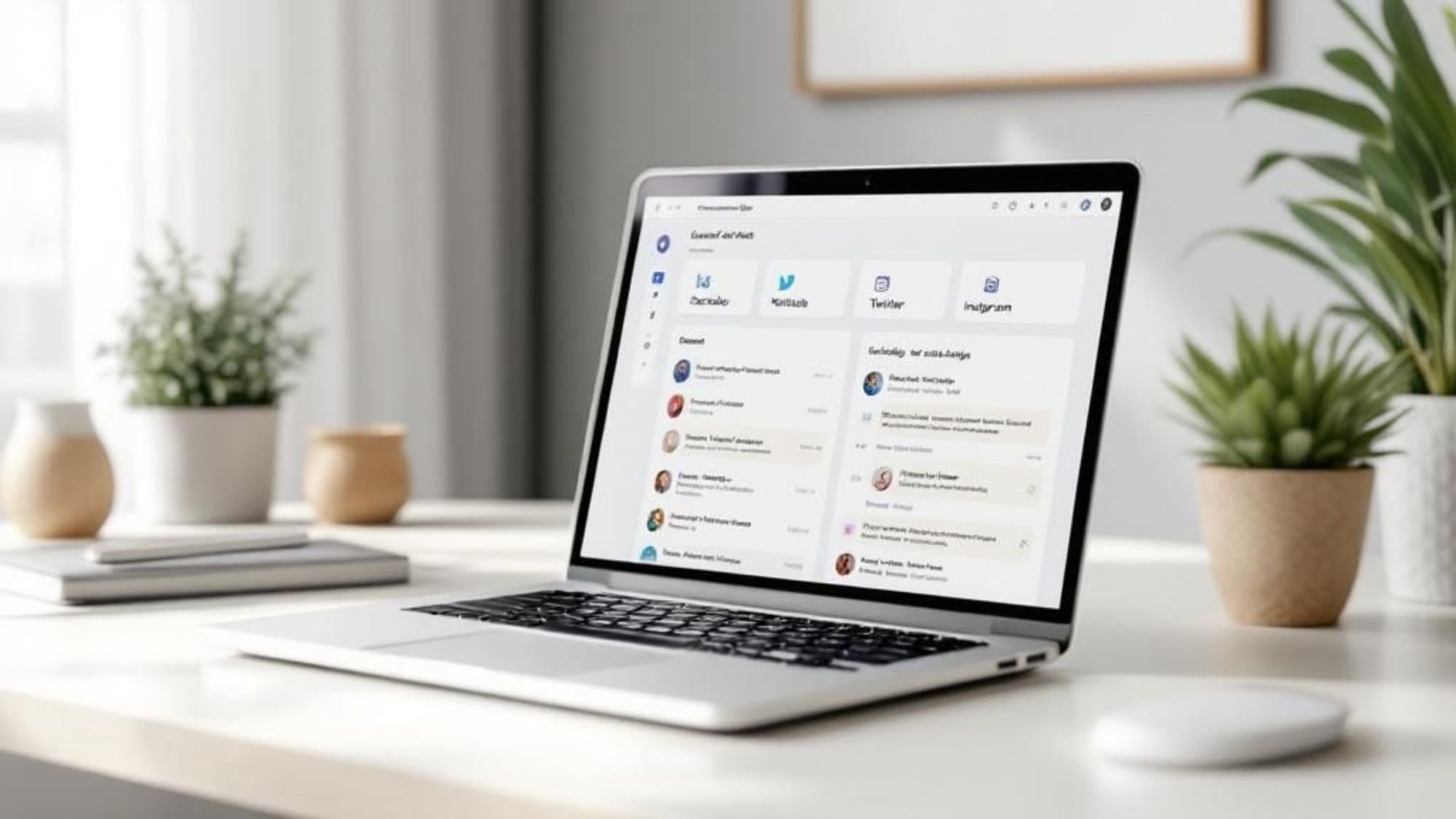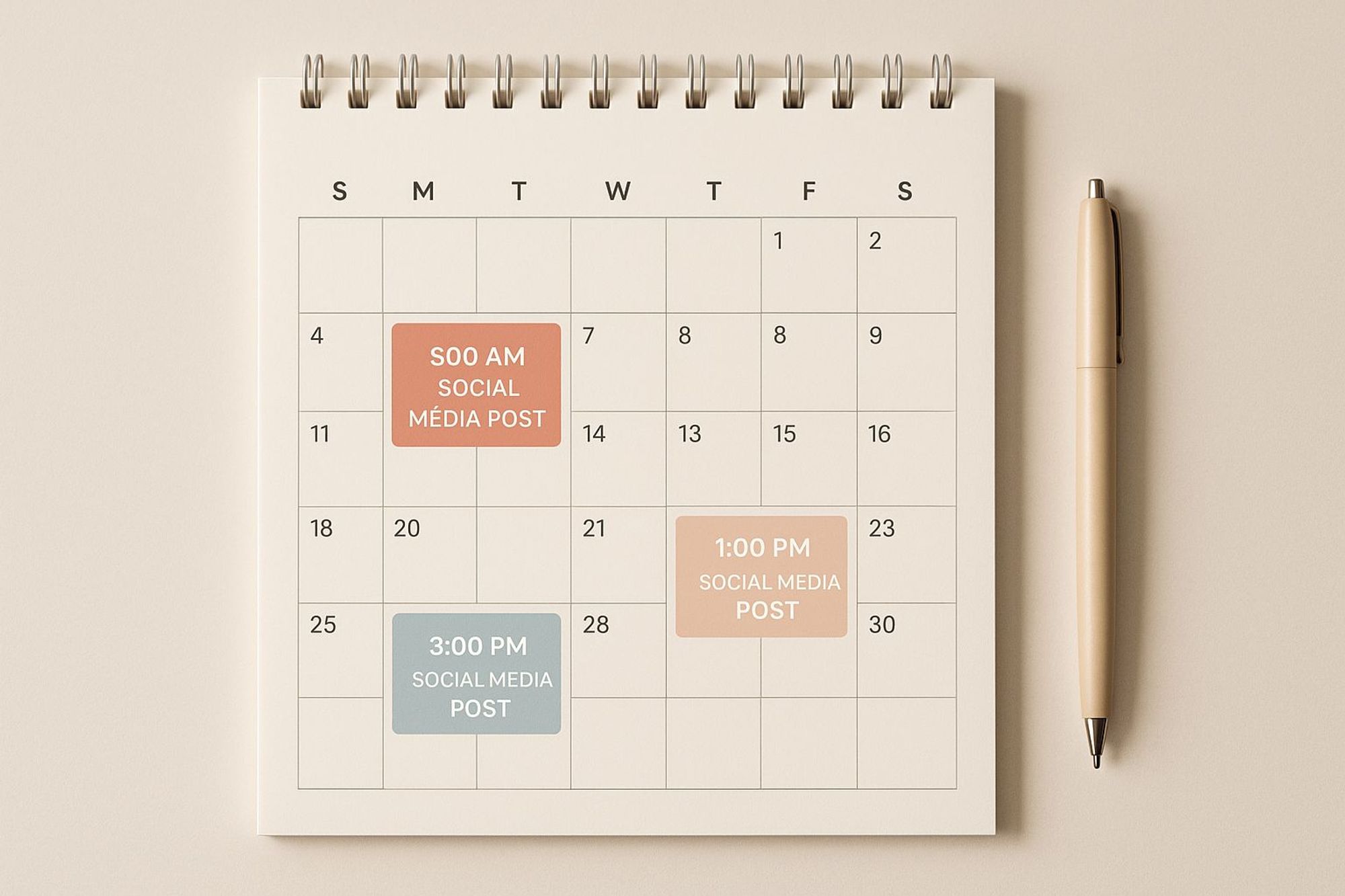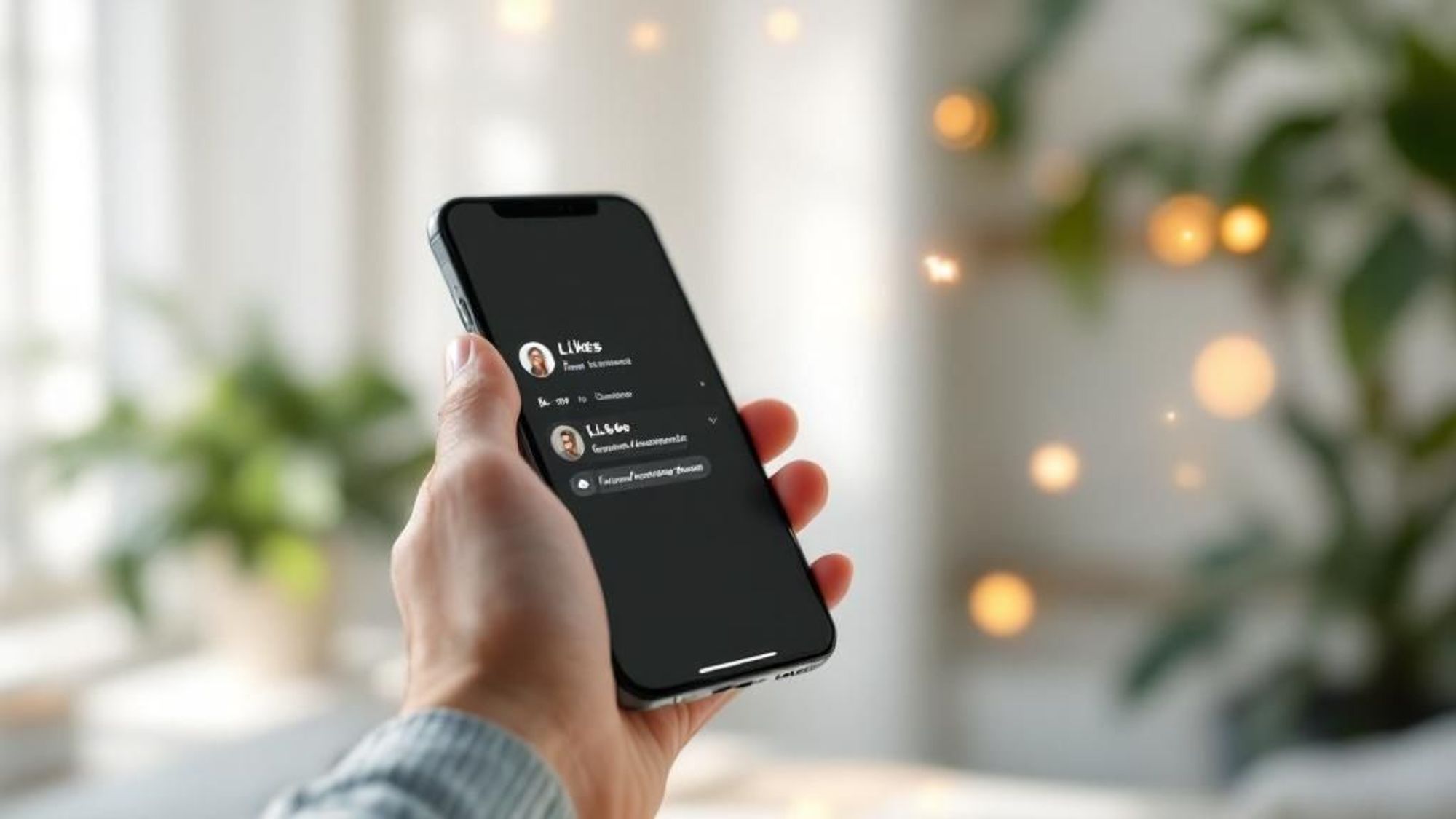Sunday, June 29, 2025
Automate Social Media Posting: Save Time & Boost Engagement


Automating your social media isn't just about clawing back a few hours in your day. When you get it right, using a tool like Schedul, you’re building something far more valuable: a consistent, reliable brand presence that works for you even when you’re not online.
It’s the difference between shouting into the void whenever you have a spare moment and having a thoughtful, ongoing conversation with your audience.
Why Smart Automation Is More Than a Timesaver
Forget the idea of "set it and forget it." That's not what this is about. This is about "set it and perfect it." True automation gives you the breathing room to step back, look at the big picture, and focus on the human side of social media—the strategy, the community building, the actual conversations.
I've seen it firsthand. Think of a small e-commerce brand, constantly scrambling to get a post out each day. It's chaotic, last-minute, and the quality suffers. By switching to an automated workflow, they started planning content weeks ahead. Suddenly, their brand had a consistent story and a clear voice.
The best part? With scheduling handled, their team could actually engage with customer comments and DMs. They had time to analyze what was working and what wasn't. The result was a 40% increase in engagement without spending another dime on ads. That’s the power of working smarter, not just harder.
The Real Wins of Automation
The real magic happens in what automation frees you up to do. It handles the mechanical, repetitive tasks so your team can focus on what humans do best: connecting and creating.
Here’s where you’ll see the biggest impact:
- Actually Reach Your Global Audience: Schedule posts to go live when your followers in London, Tokyo, or New York are actually scrolling, not just when it’s convenient for you.
- Build a Consistent Brand Voice: A steady, reliable presence is how you build trust and recognition. No more ghosting your audience for days at a time.
- Free Up Your Team for High-Impact Work: Let your team shift from the drudgery of manual posting to analyzing performance, jumping into conversations, and refining your overall strategy.
The goal isn't to replace the human element; it's to empower it. Let technology do the heavy lifting so your team can focus on creativity and genuine connection. That’s how you build a community, not just an audience.
This isn't just a "nice to have" anymore. By 2025, there will be a projected 5.42 billion people on social media, with the average person hopping between almost seven different platforms every month. Staying relevant across all of them without a smart system is nearly impossible. To truly get a handle on this, you need to Master Automatic Social media Posting.
A lot of people worry that scheduling posts will kill their reach. We've looked into this, and our guide on whether scheduling posts affects engagement shows that when you do it right—posting great content at the right times—it can actually boost your visibility.
Building Your Automation Foundation

Diving into a new automation tool without a clear plan is a classic mistake. It's like trying to build a house without a blueprint—you might end up with something, but it probably won’t be strong, functional, or what you actually wanted. To truly automate social media posting in a way that gets results, you need a solid foundation built on clear goals and a deep understanding of your own content.
Before you even think about scheduling your first post, take a moment to define what success actually looks like. Are you trying to drive more traffic to your latest blog post? Is the main goal to generate better leads for your sales team? Or maybe you're focused on positioning your brand as the go-to expert in your niche.
Your answers here will shape every single piece of content you create and automate.
Conduct a Quick Content Audit
You're probably sitting on a goldmine of content you’ve already made. A quick content audit is all about finding those hidden gems. Pull up your social media analytics from the last three to six months and pinpoint the posts that got the most love—we're talking likes, comments, shares, and clicks.
But don't just stop at the raw numbers. You need to look for patterns.
- Which topics consistently got people talking?
- Did your video content blow static images out of the water?
- Were captions that asked a question more engaging than simple statements?
This data is your roadmap. It removes the guesswork and tells you exactly what your audience wants to see, making your automated feed that much more effective from day one.
Establish Your Core Content Pillars
Once you know what resonates, it's time to organize your strategy around content pillars. These are the three to five big-picture themes or topics your brand will talk about over and over again. For a fitness coach, for instance, these pillars could be Workout Tips, Healthy Recipes, Mindset Motivation, and Client Success Stories.
Having these pillars makes content creation incredibly efficient. Instead of waking up and wondering, "What should I post today?", you can focus on creating new content that fits neatly into one of your established buckets. This is the real secret to batching your work—setting aside a block of time to write all your Workout Tips for the month, then another for Healthy Recipes.
Your automation tool is the vehicle, but your content pillars are the GPS. They ensure every scheduled post has a purpose and contributes to a cohesive, valuable brand story that resonates with your audience.
This structured approach is also critical for building an evergreen content library. We're talking about high-value, non-timely posts you can reuse and reschedule for months—things like "how-to" guides, foundational tips, or answers to frequently asked questions. A well-stocked evergreen library guarantees your automated schedule is never empty and always delivering value.
By setting clear goals, auditing your past wins, and building a structured content plan, you turn automation from a simple scheduling chore into a powerful growth engine. Of course, the right tools make this process much smoother. For a detailed comparison, check out our guide on the best social media management tools to find the perfect fit for your new strategy.
Choosing the Right Automation Tool for Your Needs
Picking the right platform to automate your social media posting can feel a bit like wandering through a maze. There are a ton of options out there, all claiming to be the best. The real secret is to look past the shiny features and get honest about what you actually need. The perfect tool for a solo creator is going to be worlds apart from what a growing marketing agency requires.
The decision shouldn't be about which tool has the most features, but which one has the right features for your workflow. Start by asking yourself some practical questions. What’s your monthly budget? How many people on your team need access? Which social platforms are non-negotiable for your brand? A tool that’s a rockstar for Instagram visuals is pretty useless if your entire audience lives on LinkedIn.
Key Functionalities to Compare
As you start digging into different tools, you'll see a few core features pop up again and again. Getting a handle on these will help you make a smart choice that actually supports your strategy. You're looking for that sweet spot between power and usability, so you aren't paying for complicated bells and whistles you'll never touch.
- Content Calendar: This is an absolute must-have. You want a visual, drag-and-drop calendar that gives you a bird's-eye view of everything you have planned. The ability to filter by social account, content type, or post status (like draft, scheduled, or published) is a game-changer.
- AI Writing Assistant: Many of the newer tools, including Schedul, come with AI built in to help you brainstorm post ideas, whip up captions, and find relevant hashtags. This can be a huge time-saver, especially on days when the creative well feels a little dry.
- In-Depth Analytics: Firing off posts into the void isn't a strategy. You need to know what’s actually working. A good tool will give you clear, actionable data on engagement, reach, and follower growth, making it easy to spot your top-performing content so you can make more of what your audience loves.
This visual decision tree can help you cut through the noise and match your specific needs to the right kind of tool.

As you can see, the best path forward really depends on the size of your team, your budget, and where you're trying to connect with your audience.
Automation Tool Feature Comparison for Different User Needs
To make the choice even clearer, this table breaks down how different types of users prioritize certain features. It's a quick way to see which column best describes your situation and what functionalities you should be looking for.
| Feature | Ideal for Freelancers/Solopreneurs | Ideal for Small Businesses | Ideal for Marketing Agencies |
|---|---|---|---|
| Budget-Friendly Pricing | Essential. Low monthly cost is a top priority. | Important. Needs to offer value without a huge price tag. | Flexible. Can invest more for robust, all-in-one features. |
| Number of Social Accounts | 1-5 accounts is usually sufficient. | 5-15 accounts to cover multiple brand channels. | 20+ accounts to manage various client profiles. |
| Team Collaboration | Not a priority. Single-user access is fine. | Good to have. 2-5 user seats for team members. | Critical. Needs roles, permissions, and approval workflows. |
| Content Calendar | A simple, visual scheduler is all that's needed. | A drag-and-drop calendar with filtering options. | Advanced calendar with campaigns, labels, and content pillars. |
| AI Writing Assistant | Very helpful for overcoming writer's block and saving time. | Useful for generating ideas and optimizing captions quickly. | A nice-to-have, but an in-house team may handle most copy. |
| Reporting & Analytics | Basic performance metrics (likes, shares, followers). | In-depth analytics to track ROI and campaign success. | Comprehensive, white-label reports for sending to clients. |
| Social Inbox | Not essential, can manage DMs/comments natively. | Helpful for centralizing customer communication. | A must-have for managing engagement across all clients. |
Ultimately, whether you're a one-person show or a full-blown agency, the goal is to find a tool that fits your unique workflow, not the other way around.
All-in-One Suite vs. Platform-Specific Scheduler
Your choice will likely come down to two main camps. On one side, you have the all-in-one suites like Schedul or Sprout Social. These are built to be the central command center for all things social media, offering powerful scheduling, deep analytics, team features, and even a social inbox to manage all your conversations in one place. They’re a fantastic fit for growing businesses and agencies juggling several clients.
On the other side are platform-specific schedulers. These tools focus on doing one thing exceptionally well for a single network, like a scheduler designed only for Pinterest or TikTok. They can be great if your entire strategy revolves around one dominant platform, but they don't scale well if you plan on expanding to other channels. For a wider look at what's out there, checking out a guide to the top social media automation tools can provide a more detailed comparison.
The best automation tool is one that feels like a natural extension of your workflow. It should reduce friction, not create more of it. If you spend more time fighting with the software than you do creating great content, it's the wrong tool for you.
At the end of the day, the goal is to find something that helps you automate social media posting without adding more headaches. The best way to do that? Take advantage of free trials. Connect your accounts, schedule a few posts, and get a real feel for the user interface. That hands-on experience is the most reliable way to know if a tool is truly the right fit for your marketing goals.
Alright, you've picked your automation tool and mapped out your strategy. Now for the fun part: actually making it work. This is where the planning stops and the real, time-saving magic begins. We’re going to walk through the nitty-gritty of getting your system up and running, from connecting your accounts to filling up your content calendar. Think of this as getting your hands dirty and building the machine that will soon run on its own.
The first, non-negotiable step is connecting your social media profiles. Every tool will ask you to authorize your accounts—X, Instagram, LinkedIn, you name it. It's a secure, straightforward login process that essentially gives your platform permission to post for you. Don't skip ahead; make sure every profile you intend to use is linked up and ready to go.
Building Your Master Content Calendar
Your content calendar is about to become your new best friend. It’s the command center for your entire social media presence. Instead of staring at a blank grid, see it as the blueprint for your brand's story over the next weeks and months. Tools like Schedul make this super intuitive with a visual, drag-and-drop interface.
A great way to start without feeling overwhelmed is by creating recurring time slots for your core content pillars. This builds a consistent rhythm that your audience will start to recognize and even look forward to.
- Motivational Mondays: Lock in an 8 AM slot every Monday for an inspiring quote or a quick win from a client.
- Tech Tip Tuesdays: Set up a recurring post for every Tuesday afternoon to share a helpful how-to or a quick tip.
- Feature Fridays: Automate a noon post every Friday to highlight a product feature or share a glowing testimonial.
This simple framework ensures you’re never scrambling for ideas. You've already built the skeleton of your content week; now you just need to flesh it out.
An empty calendar is daunting. Setting up recurring slots first gives you structure. It transforms the dreaded "What on earth do I post today?" into a much simpler "Which great piece of content fits this spot?"
Of course, when you post matters just as much as what you post. Dropping your best content while your audience is offline is a waste of a great post. For a deep dive into this, check out our guide on the best time to post on social media for some data-backed advice.
Organizing Your Content Library and Bulk Scheduling
Want to know a secret to long-term automation success? An organized content library. This is a digital vault inside your scheduling tool where you can stash all your approved, ready-to-publish content. The trick is to categorize everything from the start. Use labels like "Evergreen Tips," "Blog Promos," or "Behind-the-Scenes" that align with your content pillars.
Whenever you create a fantastic piece of content that isn't time-sensitive, pop it straight into your evergreen library. This creates a bank of high-quality posts you can draw from anytime you have a gap in your schedule or just need to keep the momentum going.
Once you have a decent library built up, it's time to embrace the power of bulk scheduling. Most tools let you upload a simple spreadsheet (usually a CSV file) with dozens—or even hundreds—of posts at once. You can map out an entire month of evergreen content in a single sitting, assigning each post to a specific date, time, and social profile.
This screenshot from Buffer shows what a well-organized visual calendar looks like. It’s a core feature you should look for, as it lets you see your whole strategy at a glance.
A clear view like this is invaluable. It makes spotting gaps or rearranging your schedule as easy as dragging and dropping.
The final, critical piece of the puzzle is customization. Automation should not mean robotic. Don't just blast the same exact message across all platforms. A good tool will let you schedule a core post and then easily tweak the text for each network. Your LinkedIn caption should be professional and polished, while your Instagram version can be more conversational and packed with relevant hashtags. Taking an extra minute to do this makes your content feel authentic and native to each platform.
Best Practices for Human-Centric Automation
Let's get one thing straight: using tools to automate social media posting isn't about firing yourself from the job. It's about letting technology handle the grunt work so you can step up and focus on what truly matters—strategy, conversation, and connection.

The biggest mistake I see people make is falling into the "set it and forget it" trap. That’s a fast track to a robotic, disengaged brand presence that repels followers. Your goal should be to build a feed that feels alive and authentic, even when the posts are planned out.
A great rule of thumb to follow is the 80/20 content rule. Make sure that 80% of your scheduled posts offer pure value—we're talking tips, educational content, entertainment, or community shout-outs. The other 20% can be for your promotional stuff, like product launches or sales. This balance makes your audience see you as a valuable resource, not just a walking billboard.
Keep the Conversation Alive
This is the most critical part. Automation handles the publishing, but you have to handle the people.
This means you need to be in your notifications, checking for comments and questions and actually responding. Nothing screams "I don't care" louder than a stream of perfectly scheduled posts with zero replies from the brand itself.
Engagement is a two-way street. When a follower comments, they're opening a door for a real connection. Replying thoughtfully is how you build a loyal community that sticks around. Honestly, this is the very thing automation frees you up to do more of. If you want to dive deeper, our guide on how to boost social media engagement is packed with actionable strategies.
Automation gives you consistency; active engagement gives you a community. The tools get your message out, but only you can build the relationships that make your brand matter.
Common Pitfalls to Avoid
It's easy to fall into a few common traps that make your automation look obvious and, frankly, lazy. The worst offender? Blasting the exact same message, hashtags, and image across every single platform. Each network has its own vibe and its own rules of engagement.
Here are a few things to watch out for:
- Ignoring Analytics: Don't just schedule and walk away. You have to track performance. If a certain type of content is consistently bombing, it's time to pull it from the rotation and figure out why.
- Forgetting Platform Nuance: That formal, text-heavy update that killed it on LinkedIn? It's going to die a slow death on a visual-first platform like Instagram. Always tailor your captions and media to fit the specific audience you're talking to.
- Neglecting Real-Time Events: This is huge. Always be ready to hit pause on your scheduled posts during sensitive news cycles or public tragedies. Pushing a cheerful promotion during a crisis makes your brand look tone-deaf and can do serious damage to your reputation.
Answering Your Top Automation Questions
Diving into social media automation is smart, but it's natural to have a few questions pop up. It's actually a good sign—it means you're thinking strategically. Let's tackle some of the most common worries people have right before they hand over the reins to an automation tool.
One of the biggest fears I hear is that automation will tank engagement. This is a complete myth, as long as you approach it correctly. Social media algorithms don't penalize you for scheduling posts. What they do reward is high-quality, relevant content that shows up exactly when your audience is ready to see it.
Done right, automation can actually boost your engagement by ensuring you never miss a beat. The time you get back from not having to manually hit "post" is pure gold. Use it to jump into your comments and DMs—that real-time human interaction is what truly signals to your followers (and the algorithms) that you're there and you care.
Finding the Right Automation Balance
So, how much should you actually automate? You don't want your feed to feel like a robot wrote it. The key is finding a healthy mix, and a great rule of thumb is the 80/20 rule.
Plan to automate about 80% of your content. This is your core, foundational stuff—your evergreen posts, how-to guides, company updates, and other content you can plan out in advance. This is what keeps your feed active and consistently delivering value.
The other 20% is for pure, in-the-moment spontaneity. This is where the magic happens.
- Jumping on a trending meme before it gets stale.
- Sharing a quick behind-the-scenes look on your Stories.
- Hopping on a live video to chat directly with your community.
This hybrid approach keeps your brand feeling fresh, human, and relevant. It combines the reliability of a content schedule with the authenticity of real-time events, which is a powerful combo for growth. If you’re laser-focused on expansion, this strategy is key. For more on that, check out our guide on how to get more social media followers.
The single biggest mistake you can make is adopting a 'set it and forget it' mindset. Automation is a tool for efficiency, not a replacement for human strategy and interaction. Your automated schedule must be paired with active community management to succeed.
Ready to build an efficient and human-centric automation strategy? Schedul provides all the tools you need, from an intuitive content calendar to powerful analytics, to help you save time while growing your community. Explore Schedul's features and start your free trial today.
No credit card required!